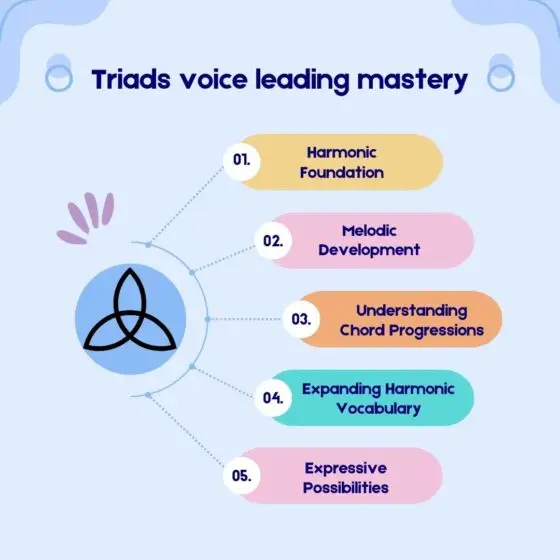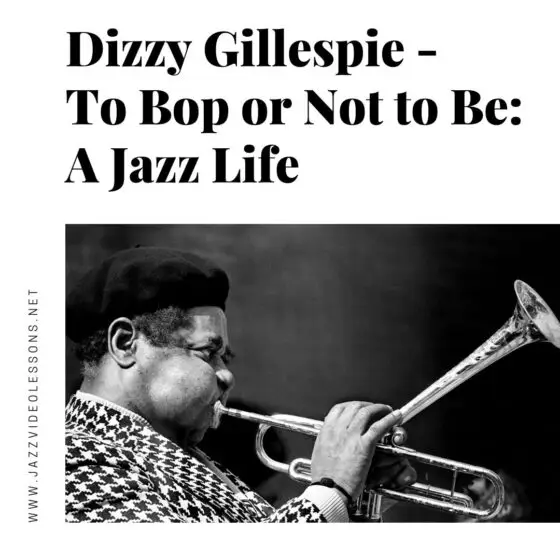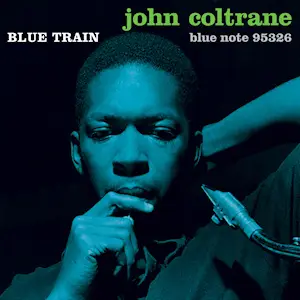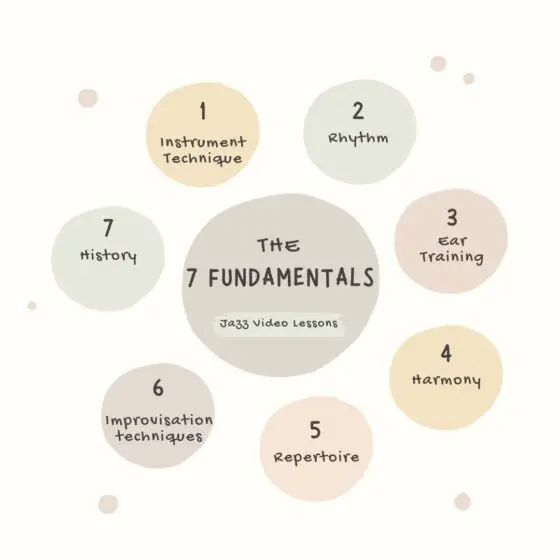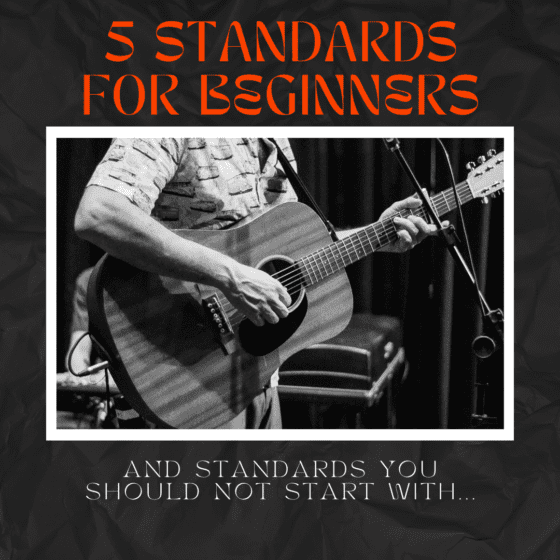
Jazz music is a genre that has stood the test of time, captivating audiences for over a century. At the heart of this musical style are the jazz standards, a collection of timeless songs that every jazz musician should know. These standards are the foundation of jazz and and an essential part to your musical development.
Because there are literally thousands of standards, it begs the question “which ones should I start learning first?” and there could be a thousand different answers! I have come across multiple lists of standards recommended for beginners, and I tend to disagree with some of the selection.
Let’s delve into the jazz standards I personally recommend for beginners, those I don’t recommend, and the reasons behind these selections.
The 5 jazz standards for beginners to start with:
1- C Jam Blues
This is a simple 12-bar blues with an extremely easy melody, which makes it a great tune to learn early on to start studying articulation, motif development, transposing in all 12 keys, swing feel exercises, bass line, and the 4 levels of improvisation.
2- Take The A Train
Considered a classic in the jazz repertoire and a must-know tune for any jazz musician as you can’t go to a jam session and not hear at some point this tune!
The song was written by Billy Strayhorn in 1939, and it became the signature tune of the Duke Ellington Orchestra.
“Take the ‘A’ Train” is a great tune to practice improvisation, it has a classic and simple chord progression that can help you to work on your soloing skills. The melody is also easy to remember, which makes it a great tune to practice your interpretation and phrasing.
3- All Of Me
This standard was composed in 1931 by Gerald Marks with lyrics by Seymour Simons.
The song is a 32-bar ABAC form, which makes it a bit more challenging than the previous two tunes. The melody is fairly easy and there are 2 bars per chords mostly which makes it a bit easier to start improvising as well. The harmony uses the usual secondary dominants and a plagal cadence.
4- Autumn Leaves
Composed by Joseph Kosma in 1945 with original lyrics by Jacques Prévert in French (original French title: “Les Feuilles mortes“), and later by Johnny Mercer in English.
This song is a AABC form and its harmonic progression is based on a major and a minor II V I in the cycle of fifths. This progression is found in many other standards (All the things you are, Bluesette, Blues For Alice, Afternoon in Paris, There will never be another you etc). Therefore it can be helpful to study this song in different keys!
5- My Little Suede Shoes
This composition by Charlie Parker was released in 1952 on his album South Of The Border.
This 32-bar AABA song has a simple melody and the harmonic progression is also fairly simple as it does not modulate but it has secondary dominants and we can have fun with reharmonization.
I find it interesting to learn this one at this point also to get familiar with the latin rhythmic feel.
The standards I don’t recommend to start with:
• All The Things You Are
While the melody is easy to play, it is a long and atypical form and the harmonic progression travels through many different keys, which makes it actually quite difficult to understand, remember and improvise on. This is, in my opinion, at least for intermediate players.
• Blue Bossa
Again very often listed for beginners, I disagree because the modulation a half step above is not that typical in standards and actually makes it challenging for beginners.
• So What
Sometimes, the simpler it seems, the harder it actually is. The fact that there is one chord for 8 bars may seem like it’s going to be easy… it’s going to be easy to get lost and not know what to do!
• Stella By Starlight
If you want to get completely confused and discouraged, then you should start with this song that has a great mix to achieve that: a complex harmonic progression, an atypical form and a subtle melody.
• There Will Never Be Another You
This is an ABAC form with a lot of harmonic content. In general, I suggest to stay with the AABA form at the beginning unless the harmonic progression is simple.
• Fly Me To The Moon
The chord progression is very similar to Autumn Leaves but a bit more subtle. Keep it for intermediate players.
• All Blues
Yes, it’s a blues, it’s a medium tempo BUT it’s in 6/8 or 6/4 or 3/4 depending on how you want to feel, and you can see why it is not a good choice for a beginner.
• Blue Monk
If you are a beginner and you play this song, I bet you don’t play the melody correctly.
The history and evolution of jazz standards
Jazz standards have their roots in the early days of jazz, when musicians would often play popular songs of the day in their own unique style. As jazz evolved, these songs became more standardized, and the term “jazz standard” was coined to refer to these classic tunes. Many of these standards were originally written for Broadway shows or Hollywood films, and they were often adapted by jazz musicians to fit their own style.
Over time, jazz standards became an integral part of the genre, with musicians using them as a starting point for improvisation and soloing. Today, jazz standards continue to be an important part of jazz, with new interpretations of classic tunes being recorded and performed every year.
Why every musician should learn jazz standards
Learning jazz standards is an essential step for any musician looking to master the art of jazz. These songs offer a glimpse into the history of the genre, and they provide a foundation for improvisation and soloing. By learning jazz standards, musicians can develop their skills and explore new musical ideas.
In addition, learning jazz standards is a great way to connect with other musicians. Many jazz standards are played at jam sessions and gigs, and knowing these songs can help musicians communicate and collaborate with one another.
How to learn jazz standards for beginners – tips and techniques
Learning jazz standards can be a daunting task, especially for musicians who are new to the genre and don’t have proper guidance. However, there are several tips and techniques that can make the process easier.
12 dos and don’ts to learn jazz standards
The first thing you want to do is to listen to recordings of the songs. I like to listen to the old versions, the original recording when possible, so I can understand and compare with newer versions. In our monthly Standards Studies, I create a playlist for the students to listen to.
It can be fun and helpful to play along these recordings for the musicians to develop their ear and learn how to interpret the melody.
Check out how to actively listen to a recording!
Another technique is to break down the song into smaller parts and practice each part individually. This can help musicians master the song’s structure and chord progression. Finally, practicing with other musicians can help musicians develop their skills and learn new approaches to the song.
Analyzing jazz standards – chord progressions and melody
One of the key features of jazz standards is their chord progressions. Until the bebop era, these progressions are fairly simple as they are based on similar patterns. It really helps having a deep harmonic understanding of those early standards to play more complex progressions.
Often students learn the melody of a standard and the chord progression independently. That’s a big mistake! Study the relationship of the melody with the chords. The answers to most of your questions are there!
Practicing jazz standards – soloing and improvisation
Once a musician has learned a jazz standard, the next step is to practice soloing and improvisation. This involves using the song’s chord progressions and melody as a starting point and developing new musical ideas based on those elements. Soloing and improvisation are an essential part of jazz, and mastering these skills can take a lifetime.
Too often students are told: “here are the chords, here are the chords scales, now improvise!”. It would be like teaching swimming by saying: “here is the Atlantic Ocean, here is your speedo, now swim!”.
The students need to go step by step to be able to manage the freedom of jazz improvisation. That’s why I have developed the step by step program The 4 Levels Of Improvisation. One step at a time, you learn how to improvise!
Common mistakes to avoid when learning jazz standards
Learning jazz standards can be challenging, and there are several common mistakes that musicians should avoid. Common mistakes are trying to learn songs that are too challenging, or too many songs at once. This can lead to a lack of focus and a failure to master any of the songs properly.
Another mistake is neglecting the melody of the song. While chord progressions are important, the melody is the heart of the song, and neglecting it can lead to a lackluster performance.
Resources for learning jazz standards – books, recordings, and online resources
There are many resources available for musicians looking to learn jazz standards. Books, in person and online courses, workshops and website like this one. All these can help you improve. If you can have a private teacher it’s even better. But nothing will replace hours of practicing. When someone tries to sell you a program “to play like a pro in 4 weeks”, you know these are charlatans.
There are a lot of content on platforms like Youtube. But you get lost in an ocean of information that is not organized, not customized to you. Plus, the amount of garbage surpasses the good content.
Jazz standard performances – famous recordings and performances
Jazz standards have been performed and recorded by countless musicians throughout history, each putting their own unique spin on the classic tunes. Some of the most famous recordings and performances include Miles Davis’ rendition of “All Blues,” John Coltrane’s version of “Giant Steps,” and Ella Fitzgerald’s performance of “Summertime.”
These performances offer a glimpse into the world of jazz and demonstrate the endless possibilities of these classic songs. By studying these performances, musicians can learn new approaches to the songs and develop their own unique interpretation.
For each standard we study on JVL, a curated playlist is created for you!
Check out the Standards Studies library.
Conclusion
Jazz standards are an essential part of jazz, offering a glimpse into the history and evolution of the genre. By learning these classic tunes, musicians can develop their skills, connect with other musicians, and explore new musical ideas.
If you are a beginner, it is crucial to have proper guidance and learn songs that will help you climb the ladder instead of songs that will feel like a hammer on your head! Start with these 5 standards, ask your teacher, and join us to learn and practice a standard each and every month!
Follow us:
Join us and get more:
The 5 jazz standards for beginner to start with:
1- C Jam Blues
This is a simple 12-bar blues with an extremely easy melody, which makes it a great tune to learn early on to start studying articulation, motif development, transposing in all 12 keys, swing feel exercises, bass line, and the 4 levels of improvisation.
2- Take The A Train
Considered a classic in the jazz repertoire and a must-know tune for any jazz musician as you can’t go to a jam session and not hear at some point this tune!
The song was written by Billy Strayhorn in 1939, and it became the signature tune of the Duke Ellington Orchestra.
“Take the ‘A’ Train” is a great tune to practice improvisation, it has a classic and simple chord progression that can help you to work on your soloing skills. The melody is also easy to remember, which makes it a great tune to practice your interpretation and phrasing.
3- All Of Me
This standard was composed in 1931 by Gerald Marks with lyrics by Seymour Simons.
The song is a 32-bar ABAC form, which makes it a bit more challenging than the previous two tunes. The melody is fairly easy and there are 2 bars per chords mostly which makes it a bit easier to start improvising as well. The harmony uses the usual secondary dominants and a plagal cadence.
4- Autumn Leaves
Composed by Joseph Kosma in 1945 with original lyrics by Jacques Prévert in French (original French title: “Les Feuilles mortes“), and later by Johnny Mercer in English.
This song is a AABC form and its harmonic progression is based on a major and a minor II V I in the cycle of fifths. This progression is found in many other standards (All the things you are, Bluesette, Blues For Alice, Afternoon in Paris, There will never be another you etc). Therefore it can be helpful to study this song in different keys!
5- My Little Suede Shoes
This composition by Charlie Parker was released in 1952 on his album South Of The Border.
This 32-bar AABA song has a simple melody and the harmonic progression is also fairly simple as it does not modulate but it has secondary dominants and we can have fun with reharmonization.
I find it interesting to learn this one at this point also to get familiar with the latin rhythmic feel.
The standards I don’t recommend to start with:
• All The Things You Are
While the melody is easy to play, it is a long and atypical form and the harmonic progression travels through many different keys, which makes it actually quite difficult to understand, remember and improvise on. This is, in my opinion, at least for intermediate players.
• Blue Bossa
Again very often listed for beginners, I disagree because the modulation a half step above is not that typical in standards and actually makes it challenging for beginners.
• So What
Sometimes, the simpler it seems, the harder it actually is. The fact that there is one chord for 8 bars may seem like it’s going to be easy… it’s going to be easy to get lost and not know what to do!
• Stella By Starlight
If you want to get completely confused and discouraged, then you should start with this song that has a great mix to achieve that: a complex harmonic progression, an atypical form and a subtle melody.
• There Will Never Be Another You
This is an ABAC form with a lot of harmonic content. In general, I suggest to stay with the AABA form at the beginning unless the harmonic progression is simple.
• Fly Me To The Moon
The chord progression is very similar to Autumn Leaves but a bit more subtle. Keep it for intermediate players.
• All Blues
Yes, it’s a blues, it’s a medium tempo BUT it’s in 6/8 or 6/4 or 3/4 depending on how you want to feel, and you can see why it is not a good choice for a beginner.
• Blue Monk
If you are a beginner and you play this song, I bet you don’t play the melody correctly.
The history and evolution of jazz standards
Jazz standards have their roots in the early days of jazz, when musicians would often play popular songs of the day in their own unique style. As jazz evolved, these songs became more standardized, and the term “jazz standard” was coined to refer to these classic tunes. Many of these standards were originally written for Broadway shows or Hollywood films, and they were often adapted by jazz musicians to fit their own style.
Over time, jazz standards became an integral part of the genre, with musicians using them as a starting point for improvisation and soloing. Today, jazz standards continue to be an important part of jazz, with new interpretations of classic tunes being recorded and performed every year.
Why every musician should learn jazz standards
Learning jazz standards is an essential step for any musician looking to master the art of jazz. These songs offer a glimpse into the history of the genre, and they provide a foundation for improvisation and soloing. By learning jazz standards, musicians can develop their skills and explore new musical ideas.
In addition, learning jazz standards is a great way to connect with other musicians. Many jazz standards are played at jam sessions and gigs, and knowing these songs can help musicians communicate and collaborate with one another.
How to learn jazz standards for beginners – tips and techniques
Learning jazz standards can be a daunting task, especially for musicians who are new to the genre and don’t have proper guidance. However, there are several tips and techniques that can make the process easier.
12 dos and don’ts to learn jazz standards
The first thing you want to do is to listen to recordings of the songs. I like to listen to the old versions, the original recording when possible, so I can understand and compare with newer versions. In our monthly Standards Studies, I create a playlist for the students to listen to.
It can be fun and helpful to play along these recordings for the musicians to develop their ear and learn how to interpret the melody.
Check out how to actively listen to a recording!
Another technique is to break down the song into smaller parts and practice each part individually. This can help musicians master the song’s structure and chord progression. Finally, practicing with other musicians can help musicians develop their skills and learn new approaches to the song.
Analyzing jazz standards – chord progressions and melody
One of the key features of jazz standards is their chord progressions. Until the bebop era, these progressions are fairly simple as they are based on similar patterns. It really helps having a deep harmonic understanding of those early standards to play more complex progressions.
Often students learn the melody of a standard and the chord progression independently. That’s a big mistake! Study the relationship of the melody with the chords. The answers to most of your questions are there!
Practicing jazz standards – soloing and improvisation
Once a musician has learned a jazz standard, the next step is to practice soloing and improvisation. This involves using the song’s chord progressions and melody as a starting point and developing new musical ideas based on those elements. Soloing and improvisation are an essential part of jazz, and mastering these skills can take a lifetime.
Too often students are told: “here are the chords, here are the chords scales, now improvise!”. It would be like teaching swimming by saying: “here is the Atlantic Ocean, here is your speedo, now swim!”.
The students need to go step by step to be able to manage the freedom of jazz improvisation. That’s why I have developed the step by step program The 4 Levels Of Improvisation. One step at a time, you learn how to improvise!
Common mistakes to avoid when learning jazz standards
Learning jazz standards can be challenging, and there are several common mistakes that musicians should avoid. Common mistakes are trying to learn songs that are too challenging, or too many songs at once. This can lead to a lack of focus and a failure to master any of the songs properly.
Another mistake is neglecting the melody of the song. While chord progressions are important, the melody is the heart of the song, and neglecting it can lead to a lackluster performance.
Resources for learning jazz standards – books, recordings, and online resources
There are many resources available for musicians looking to learn jazz standards. Books, in person and online courses, workshops and website like this one. All these can help you improve. If you can have a private teacher it’s even better. But nothing will replace hours of practicing. When someone tries to sell you a program “to play like a pro in 4 weeks”, you know these are charlatans.
There are a lot of content on platforms like Youtube. But you get lost in an ocean of information that is not organized, not customized to you. Plus, the amount of garbage surpasses the good content.
Jazz standard performances – famous recordings and performances
Jazz standards have been performed and recorded by countless musicians throughout history, each putting their own unique spin on the classic tunes. Some of the most famous recordings and performances include Miles Davis’ rendition of “All Blues,” John Coltrane’s version of “Giant Steps,” and Ella Fitzgerald’s performance of “Summertime.”
These performances offer a glimpse into the world of jazz and demonstrate the endless possibilities of these classic songs. By studying these performances, musicians can learn new approaches to the songs and develop their own unique interpretation.
For each standard we study on JVL, a curated playlist is created for you!
Check out the Standards Studies library.
Conclusion
Jazz standards are an essential part of jazz, offering a glimpse into the history and evolution of the genre. By learning these classic tunes, musicians can develop their skills, connect with other musicians, and explore new musical ideas.
If you are a beginner, it is crucial to have proper guidance and learn songs that will help you climb the ladder instead of songs that will feel like a hammer on your head! Start with these 5 standards, ask your teacher, and join us to learn and practice a standard each and every month!
Did you enjoy this article?
Consider writing us a short review on Google or Facebook, that’d be much appreciated!

